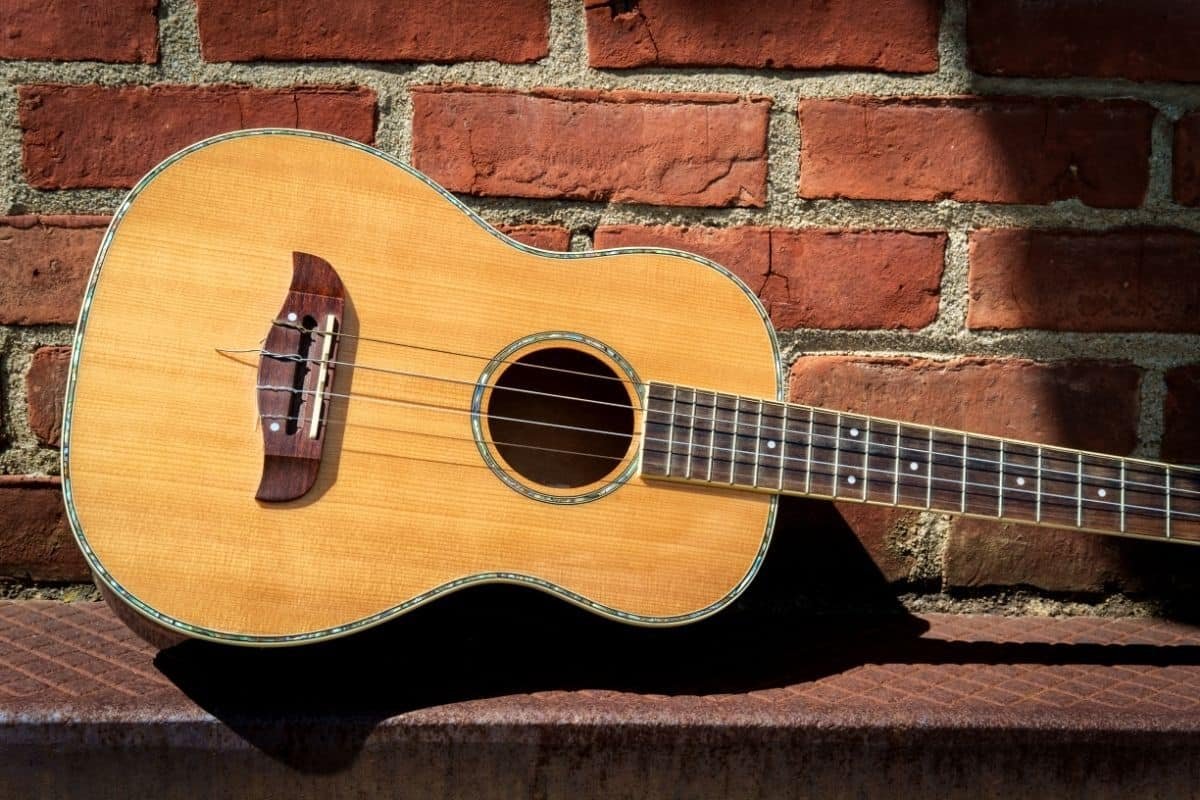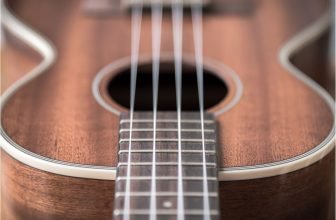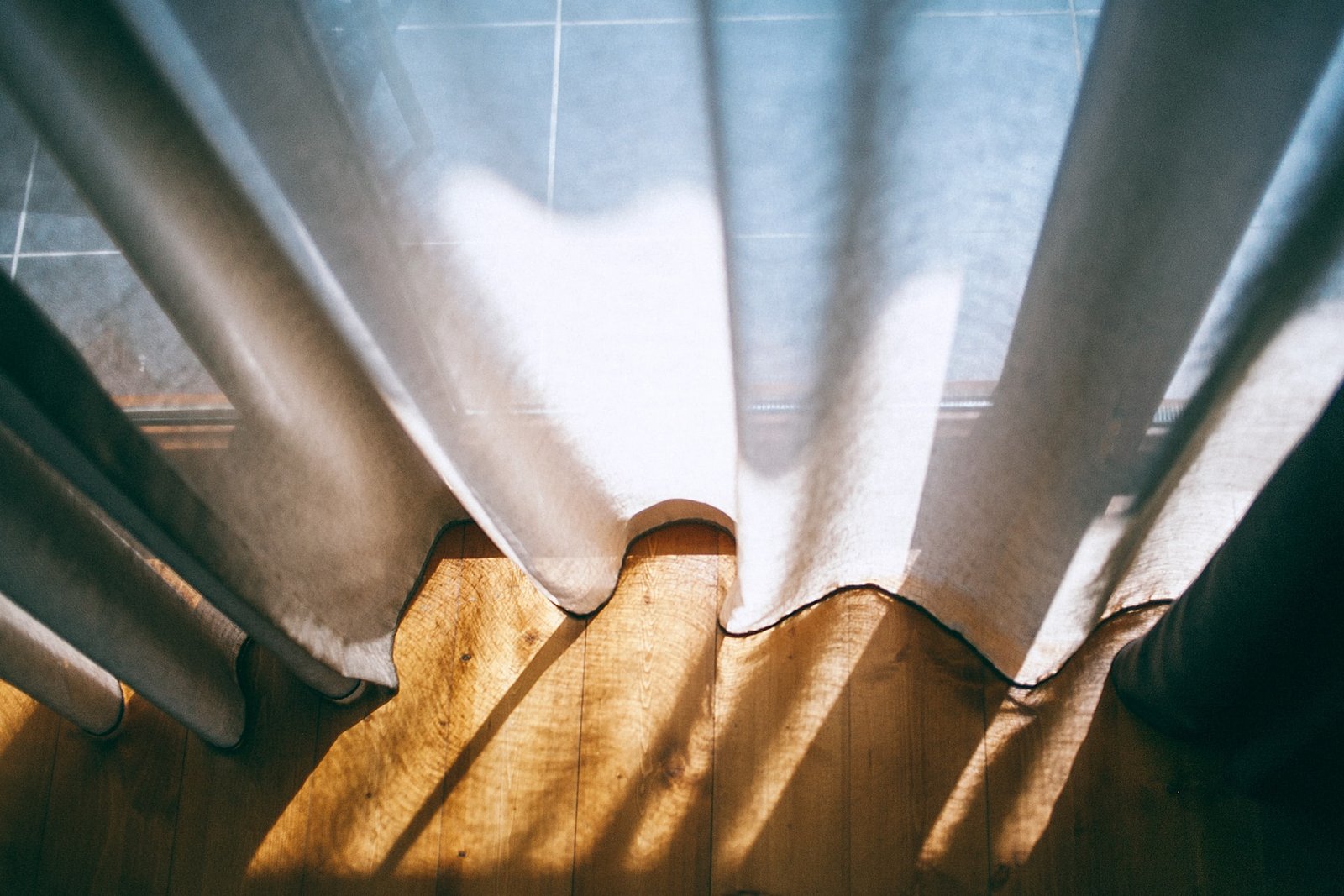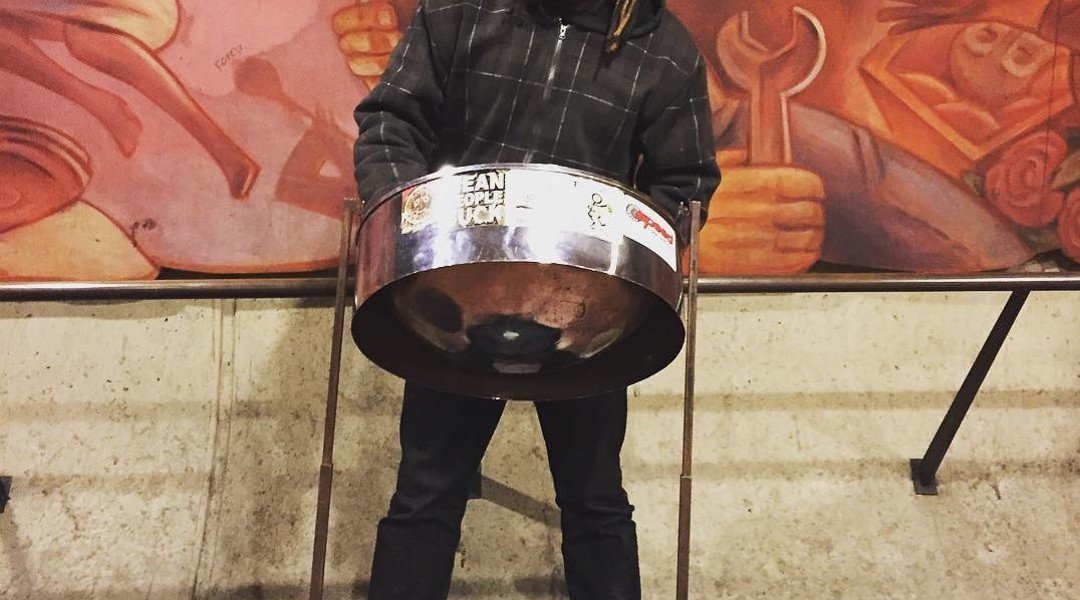Best Baritone Ukulele – How to Choose and Enjoy?

The baritone is one of the most unusual versions of ukulele, looking like the missing link between a concert/tenor ukulele and a guitar. Invented in the 1950s, it has many fans around the world, and so many vendors sell it that it makes sense to go choosing the best baritone ukulele among the available ones. If you have never tried it, but you love playing either an acoustic guitar or a smaller ukulele, I guess you’ll like the experience, even despite the effort required to relearn.
What is the uke baritone to choose? As for me, I’m all sold on Cordoba 20BM, with its perfect balance of sound, quality, and price. But you may like other models as well, given how diverse baritone ukuleles are even within its rather tight class definition. You may prefer their design, the sound, and – why not – the price.
What you see next is not a ukulele contest. It’s the preference list that you may agree or disagree with. I’d also insist that you find a video for any model you are interested in and see (and, more important, hear) the way it sounds. Connect your best speakers for this experience.
Table could not be displayed.Best Baritone Ukulele Models – My Probably Biased List
Contents
When we come to the model list, I must warn you: I didn’t include any exotic models made in Hawaii of local woods that are extremely true and cost an arm and a leg. No, all the ukuleles here can be found on Amazon and are not extremely expensive. I consider it the best approach when it comes to baritone ukulele for beginners, though neither did I pursue the cheapest ones around. Let’s get it started!
1. Cordoba 20BM: The Top Pick
No products found.
What do I like the most about Cordoba 20BM? This baritone ukulele embodies everything we love about this type of instrument. It’s the best one to learn what baritone ukes are all about. Given that the manufacturer specializes in string instruments like guitars and ukuleles, it’s the competence we might expect.
When it comes to materials, it’s as typical as can be. A mahogany body, rosewood bridge and fingerboard, Aquila strings (two Nylgut and two wound) – everything is like it should be. So, it’s an example of a perfect baritone uke, with solid build and great design. The body is of a traditional shape, no cutaways like those I liked about the tenor ukulele by Cordoba, resembling a classical acoustic guitar. Sorry for the spoiler, but most of them look like this.
The traditional tuning is DGBE (that’s the main difference between the baritone ukulele and its smaller relatives, like concert, tenor, or soprano ones), and the body provides a solid warm sound. There is a hookup for an amp, but it is made as purely acoustic, and this let the engineers focus on its acoustic properties. My hands loved it even more than my ears did, so great it feels to play. My wallet didn’t, though: while the price is about $230, it comes with no accessories, so you will have to buy everything separately, from a gig bag to a tuner and extra strings.
- Great look;
- More than a decent sound;
- Perfect balance;
- Stays tuned after playing;
- Reasonable price.
- No accessories in the kit.
2. Lohanu LU-B: a Runner-Up
No products found.
The Lohanu, despite its name sounding quite Hawaiian, is a Canadian company that orders its instruments in China and sells under its brand. This is neither good nor bad until you look at a certain instrument, and LU-B is quite a good acoustic bari uke. It’s especially great for beginners: not very expensive (just under $100), standard, and comes with a rich kit.
The kit includes everything one might need for maintenance: a strap (pins are on the instrument already), a case, three picks (one leather, two plastic), a tuner, and extra GCEA-tuned strings that can help you retune LU-B as a bigger version of a tenor uke. Owners also can access curated video lessons online.
The body of the instrument is made of laminate wood – at least, the vendor doesn’t hide it. In this price range, solid wood has little advantage over laminate in terms of sound. Both string sets are by Aquila, made of Nylgut. What’s unexpected for this price is an adjustable truss rod which enables you to adjust string height and neck angle. Overall, the good purchase for a beginner.
- Impressive set;
- Good build;
- Easy tuning;
- Extra GCEA strings.
- Laminate body;
- Rather obscured manufacturer.
3. Kala KA-SA-B: The Premium Pick
No products found.
And Kala is a brand that requires no investigation. This California company is a famous ukulele manufacturer, and its products are always high-quality. So is the KA-SA-B, quite an unusual bari uke. Looking quite simple, it’s indeed one of the best baritone ukulele models around.
Its body is made of solid acacia wood – not the most obvious choice yet a great one, and it shows at first sight. It is often compared to Koa wood, the truest material for ukuleles (indeed, Koa is also an acacia, but not every acacia is Koa). Some elements (like the neck) are made of walnut and mahogany. It’s an acoustic-only model, with quality Aquila Nylgut strings. If you are going to record it, you’ll need a serious microphone setup.
The sound it makes is among the most well-rounded among the models I review, so it was hard to resist the temptation to not return it. The sound is very ukulele, not so much resembling a guitar as other bars sometimes tend to. If there is any dealbreaker, it’s the price: well above $500 (in my case, $535). Plus, it comes without any accessories. You must be either experienced or very confident to pick this one.
- Great warm sound;
- Solid build;
- Unusual materials;
- Loud;
- Just beautiful!
- Rather pricey;
- Comes without accessories.
4. Sawtooth ST-UKE-MB: The Perfect One to Start
No products found.
Is it crucial for you that the ukulele is American made? Sawtooth is the one to look for. The one with a jaw-breaking name is distinct, and on the first sight, one might see it’s not your usual ukulele. Not as defiantly premium as the one by Kala, it’s yet impressive and stylish.
It’s a bit smaller than the rivals, its size rather matching the definition of concert-size. But it’s a properly tuned baritone ukulele, with a solid mahogany body and neck and rosewood fretboard. The look is complete with etched laser rosettes. The strings are the industry default – the Nylgut by Aquila. It’s a purely acoustic one, with pure and crisp sound, though rather generic.
The set is just as rich as the sound. It doesn’t go cheap by stuffing the pack with strings and picks. Instead, it comes with a gig bag, a standalone tuner, a guide, and – exclusively – a ukulele stand. Given the price (now about $130), it’s just a bargain. An experienced professional may find it too basic, but for learning or for local parties, it’s a great choice.
- Decent sound;
- Stylish look;
- Quality materials;
- A good set that even includes a stand;
- Affordable price.
- Sounds quite generic.
5. Horse Baritone Ukulele: A Dark Bari
No products found.
I must confess: I didn’t find out the real manufacturer of this ukulele (though by default, these noname brands are Chinese, so I think the truth is out there). Some say it’s the same factory that makes Kmise, Aklot, and Hricane. The appearance, the materials, and the kit also lead to this idea. This is a 30-inch baritone ukulele, with mahogany body and a habitually rich set, which includes (again) a strap, a gig bag, a polishing cloth, three picks, a manual, and a pack of replacement strings.
The materials are not that impressive. The body is made of mahogany (and it feels like laminate), while the neck is of Okoume. The strings are nylon by D’Addario, not your usual Nylgut by Aquila, which is a bit of downgrade. The overall finish is smooth, and the ukulele is well assembled (which I didn’t even have to point out with others). What I liked was well-done stable tuners that make sure the strings will stay tuned for long.
The impression, in short, is “good for a beginner.” The sound lacks depth, even despite the size, but the overall feel is decent. At least, again, this one demonstrates the basics and the abilities of the instrument and doesn’t horribly fail. What else would you expect for 1 cent shy of $100?
- Traditionally rich set;
- Good sound;
- Quality sealed tuners;
- More than affordable.
- The brand is unknown;
- The material is probably laminate.
6. Kmise Baritone Ukulele: Tuned Like Tenor
No products found.
And here comes the aforementioned Kmise. One might say there is little difference from Horse, not even looking. I chose to look at the body only, without accessories that are unlikely to surprise. The instrument itself did, though. The most surprising thing about it is its tenor-like GCEA tuning.
As for the appearance, it looks as generic as you might imagine. The body is said to be of mahogany and the fingerboard of rosewood. The color is traditional for mahogany, though it feels (again) like laminate. But it has an adjustable truss rod, which is great for this money. The overall build is decent too.
What are the upsides? First, it’s easy to buy an extra set of DGBE strings and make it a standard bari uke, but if you need just an enlarged tenor, here it is. Second, the price pays for it, being just around $80. Third, the sound: the Aquila strings make a difference, so does the size. I unintendedly judged the sound as a tenor version, and it had the body and the force regular tenors lack. With DGBE, it doesn’t impress (though neither does it disappoint, given the price).
- Baritone size, tenor tuning (if you like it);
- Decent materials;
- Quality tuners;
- Available with various accessories;
- Very affordable.
- Baritone size, tenor tuning (if you dislike it);
- Finer tuning required.
7. Caramel Ebony Wood: Tastes Like Music
No products found.
I have once explored where Caramel ukuleles come from, and it’s a Chinese company also known for its Rubin ukuleles. They were rather decent for the price (at least, a Caramel tenor one was great except for its electric mode). As for the baritone, it, being an electric baritone ukulele, shares a lot with its smaller relative, including a built-in preamp and a set of tenor strings.
The greatest thing about this instrument is its dark appearance, and no wonder, given that it’s made of ebony wood (with elements of mahogany and walnut as well, but they don’t contribute that much). The logo on the neck looks luxurious, and so do the tuner heads. The built-in tuner does its job well.
The kit unsurprisingly has everything a starter needs, even a wall mount and a wrench for adjusting the truss rod. As for the sound, it’s warm, juicy, a bit dark – it sounds just like it looks, and there aren’t many baritone acoustic/electric ukulele options to choose between. If they deliver what they promise (and shipping issues are frequent, alas), you’ll get a great instrument for your $140 or even less.
- Stunning appearance;
- Works as baritone or tenor;
- Dark distinct sound;
- Rich set;
- Affordable price.
- Check whether you receive the right package;
- To some, the sound is flat.
8. Diamond Head DU-200B
No products found.
Despite the shiny name, this baritone ukulele does not look as shiny as the one by Caramel. What we see is a regular mahogany laminate (though it’s not articulated) body and neck, gold-plated tuners, and a smooth satin finish. Quite basic for a baritone ukulele, but quite decently made. Don’t expect luxuries like adjustable rod and extras, though; the basic set only includes a gig bag.
The overall quality of the instrument is very solid, though. The weakness is the original strings: they are plain nylon, and the way they sound is just as plain. When replaced with Aquila, though, the instrument unfolds its potential. You can also opt for other strings to make it sound more guitar-like, or, on the contrary, make it a big tenor.
The price is more than moderate: just above $110, plus the replacement strings if you haven’t got spare ones. It’s not the best sounding baritone ukulele out of the box, but it challenges you to try various mods, and you may finally find your perfection with it.
- Decently assembled;
- Allows for modifications;
- Good for learning;
- Affordable.
- Better replace the strings immediately;
- May need frequent retuning.
Buyers’ Guide on Baritone Ukuleles
Even after reading these baritone ukulele reviews, some details may require explanation, and that’s okay. So, let’s point out what to look for in your perfect bari uke.
Pros and Cons of Baritone Ukuleles in General
While the most obvious difference between baritone ukuleles and the closest to them tenor ukuleles is the size (the baritone models are bigger, about 30 inches long, while the tenor default is 26), a more important one is tuning.
Professionals point out the following pros of baritone ukuleles:
- The size. This is the biggest ukulele that is indeed a guitar-size, so it is more comfortable to play for a larger person or for someone who has some experience with a standard acoustic guitar. There is more space between frets, and the neck is wider, which is an undeniable pro for bigger fingers. In addition, its bigger body provides louder and fuller sound.
- Tenor and soprano ukuleles bring the inevitable high G/low G confusion. They may come with varying G strings, so some players just replace the high G string with the low G (or vice versa), and some have to relearn if they change the instrument. With a baritone ukulele, there is no confusion because the G string is within the sequence and thus is hardly defined.
- The bigger brassier sound. This is achieved partly due to different tuning and partly because of – science, bee! – the bigger body of the instrument itself.
- Easier to switch from a guitar. Not only because of its full guitar size, but because of its tuning (DGBE), which mirrors the first four strings of a guitar. So, if you are already familiar with a guitar and want to master the ukulele, the baritone version is the first option to consider. There are just fewer strings, but the basics are similar.
- It may be a gateway to playing the guitar as well. Again, it’s easier to start learning the baritone ukulele because it only has four strings. Switching to a guitar later will be easier because of the familiar size and tuning: essentially, there will be just more strings to strum.
- This instrument is unusual. It’s not the ukulele you visualize when you hear the word. It helps you gain attention, not only because a person with a musical instrument is likely to become the life of a party. But also because professionals will also wonder about your reasons, especially if you show that you have mastered it. It’s not the instrument of choice, but that makes it even more of a thing for both amateurs and pros. There is a con, though: one day you’ll get tired of explaining that it’s not a guitar.

The baritone ukulele also has its downsides that logically follow from its virtues.
- The size. Children or smaller persons will feel better with a soprano or even a tenor ukulele.
- Different tuning also causes some compatibility problems. Your previous ukulele skills won’t help you master the new techniques; they may probably even stand in your way.
- Most manuals and songbooks for the ukulele are written for a more traditional GCEA tuning. Though DGBE is, in fact, easy to transpose to GCEA (usually, you just need to place the capo on the fifth fret), it’s not what you buy an instrument for.
Things to consider before buying
- Acoustic vs acoustic-electric. It depends on how you are to use it. Electric ukuleles are easier to record and connect for bigger gigs, as well as to apply effects. But the quality of the sound may suffer, and unwanted distortion is also possible.
- Body materials. Various types of wood impact the overall sound: some (like mahogany) make it deeper and warmer, and others (like spruce or cedar) make the sound thinner and brighter.
- Fret and neck materials. They also affect the sound in a similar way that those of the body do.
- Weight. It’s a matter of your personal comfort – and a reason why you should try before buying. If you have a chance to check whether a certain model feels good in your hands, don’t neglect it.
- Tuners. You better check the quality of the tuner in person. Some models also come with built-in electronic tuners, but, again, the quality of these may vary. Others may come with a kit that includes it.
- Extra features and accessories. The more the better, in general. But affordable kits are often reported to be of inferior quality, so you have to buy better accessories instead. On the other hand, extra strings, compatible bags, or straps are always good to have.
FAQ
There are always questions about any musical experience, and, as usual, I decided to address some of them. When the answers come from my own experience rather than from facts, I say it as it is.
What’s the difference between baritone and tenor ukuleles?
The most obvious one is the size, the baritone being noticeably bigger. But in terms of playing, the baritone uke is tuned differently: while the standard uke tuning is GCEA, the baritone is DGBE (usually, D3-G3-B3-E4 from low to high).
How to tune a baritone ukulele?
The tuning mechanism is similar to a guitar or another uke. As for fine-tuning, there are standalone tuners, mobile apps for tuning, and even online assistance. In addition, there are ways to retune it into a bigger version of a tenor ukulele.
How easy is it to learn a baritone ukulele?
It is easier than other similar instruments, but don’t expect to become an expert in weeks. The basics, though, can be learned in weeks or even days, especially if you have already mastered a guitar or another uke. As for me, it took me about two months to play something that didn’t make me hate myself. On the one hand, my previous experience with various instruments helped me; on the other, my standards are also a bit elevated. A beginner can learn to play rather well in several months, usually from three to six.
Is baritone ukulele easier than guitar?
Four strings are easier to master than six or more. Still, if you master it, you can easily beat acoustic baritone guitar players. Anyway, you will never be quite satisfied, there is always a step ahead.
Can I use guitar chords for baritone ukulele?
You must keep in mind that a baritone ukulele only mirrors the upper four strings of the guitar. So, yes, you can. But there will be some limitations because of missing strings. On the other hand, you have more freedom to manipulate with the existing four, given the wealth of frets, so the chords you can use are combinable.
The Fadeout
Tired of reading? So, now you know more about baritone ukuleles, and you may come to your own conclusions. I still recommend Cordoba 20BM as my pick, but you may prefer the stunning style of Caramel or the premium Kala, or whatever. Are you going to learn, or have you already reached a level high enough to enjoy finer nuances? It defines whether it’s worth investing more.
And if you know any other worthy models or have something to add, welcome to the comments. It’s gonna be a good session down here!




